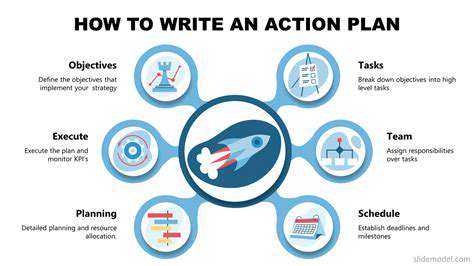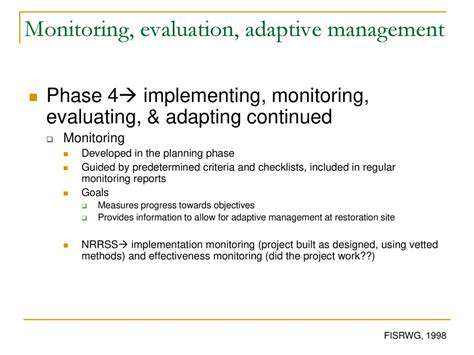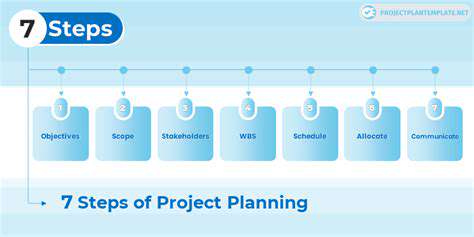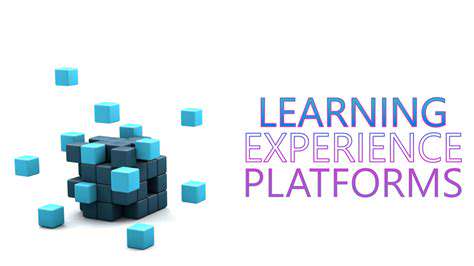Guide to Setting Career Goals
Identifying Your Passions and Strengths
Understanding Your Values
Identifying your core values is a crucial first step in aligning your career aspirations with your personal beliefs and motivations. Think about what truly matters to you in life – is it helping others, creativity, intellectual stimulation, financial security, or something else entirely? Understanding these values allows you to recognize opportunities that resonate with your inner compass, making the process of choosing a career path more fulfilling and less stressful. Understanding your values helps you avoid careers that might pay well but don't align with your personal compass, leading to dissatisfaction and burnout in the long run. By aligning your career with your values, you're more likely to experience sustained motivation and job satisfaction.
Consider how different career paths might reflect or challenge your values. For example, if helping others is a core value, a career in healthcare, social work, or education might be a good fit. If creativity is paramount, careers in the arts, design, or writing could be more appealing. Exploring various options and reflecting on how they align with your values will provide valuable insights.
Recognizing Your Strengths
Pinpointing your strengths is essential for identifying careers that capitalize on your unique talents and abilities. Are you a natural leader, a meticulous planner, a creative problem-solver, or a skilled communicator? Understanding your strengths allows you to choose roles where you can excel and contribute meaningfully. This self-awareness is key to finding a career that feels authentic and empowering. Don't just focus on what you're *good* at, but also what you *enjoy* doing.
Consider taking personality assessments or seeking feedback from trusted mentors, colleagues, or friends. These perspectives can reveal hidden strengths you might not have recognized on your own. Honest self-reflection and feedback from others can provide a more well-rounded understanding of your capabilities and preferences, ultimately leading to a more informed career decision.
Exploring Potential Career Paths
Once you've grasped your values and strengths, it's time to delve into potential career paths that align with both. Research different industries and professions to discover those that resonate with your interests. Look beyond the typical job titles; consider the underlying skills and tasks involved in various roles. Think about what types of work environments you thrive in – fast-paced environments, collaborative settings, or independent workspaces. This exploration will give you a clearer picture of the types of roles that could bring you joy and fulfillment.
Explore online resources, attend career fairs, connect with professionals in your field of interest, and speak with people who are already working in careers that spark your curiosity. Learning from others' experiences can provide valuable insights and help you make more informed decisions about your future career path. Networking with professionals in your desired field can help you gain a deeper understanding of the day-to-day realities and uncover any potential concerns about the chosen career path.
Analyzing Your Interests and Hobbies
Your interests and hobbies can often reveal hidden passions and talents that can translate into fulfilling career choices. What activities do you find yourself engaging in with enthusiasm? What projects or tasks do you gravitate towards? These activities can offer clues about your underlying interests and skills, which can be valuable assets in the job market. Identifying your interests can lead you to careers that you would truly enjoy and are more likely to excel in.
Consider how your hobbies could be leveraged professionally. For example, if you enjoy writing, you might explore careers in journalism, copywriting, or content creation. If you love problem-solving, consider roles in engineering, computer science, or data analysis. Connecting your interests to potential career paths can help you uncover unexpected opportunities that you might not have considered otherwise. This exploration is crucial for finding a career that truly matches your personality and passions.
Developing a Plan for Action
After identifying your passions, strengths, and potential career paths, it's essential to create a plan of action. This might involve further education, skills development, networking, or job searching. Setting realistic goals and creating a timeline for achieving them can help you stay motivated and focused on your career objectives. Having a concrete plan will also help you stay organized and track your progress.
Consider seeking mentorship or guidance from experienced professionals in your field. Their insights and advice can provide valuable support and help you navigate the complexities of the job market. Don't be afraid to ask for help; support systems can make a significant difference in your career journey. Developing a plan for action is crucial for turning your aspirations into tangible, achievable goals.
Developing a Plan of Action

Defining the Scope and Objectives
A crucial initial step in developing a robust plan of action is precisely defining the scope of the project. This involves clearly outlining the specific goals and objectives you aim to achieve. A well-defined scope ensures that everyone involved understands the boundaries of the project and what success looks like. This clear definition prevents scope creep, which can lead to project delays and cost overruns. Understanding the project's limitations from the outset will help you to focus your efforts and resources effectively.
Defining measurable objectives is equally important. These objectives should be specific, measurable, achievable, relevant, and time-bound (SMART). For example, instead of a vague goal like improve sales, a SMART objective might be increase online sales by 15% within the next quarter. This level of specificity provides a clear benchmark for tracking progress and evaluating the effectiveness of your plan.
Identifying Resources and Constraints
A thorough assessment of available resources is essential for a realistic plan. This includes not only financial resources but also human capital, technological infrastructure, and access to necessary materials. Recognizing potential limitations, such as budget constraints or time limitations, is equally important for effective planning.
Understanding the constraints of a project allows for the development of a plan that is both realistic and achievable. This proactive approach helps to avoid unexpected obstacles and allows for adjustments to be made early in the process.
Creating a Timeline and Milestones
A well-structured timeline is critical for managing expectations and maintaining momentum. Breaking down the project into smaller, manageable milestones helps track progress and identify potential bottlenecks. This allows for more focused effort and the ability to adjust the timeline as needed.
Establishing clear deadlines for each milestone is essential for maintaining a schedule. This allows for regular check-ins and progress reviews to ensure the project stays on track and to address any potential roadblocks. Effective time management is key to successful project execution.
Allocating Responsibilities and Roles
Clearly defining roles and responsibilities for each team member is crucial for ensuring accountability and avoiding confusion. A well-defined structure helps streamline communication and collaboration, which are vital for a successful outcome.
Assigning specific tasks to individuals or teams allows for the efficient use of individual strengths and expertise. This structured approach facilitates the completion of tasks in a timely manner and reduces the risk of overlapping responsibilities. This approach is essential for efficient project completion.
Developing Contingency Plans
Anticipating potential problems and developing contingency plans is a proactive approach to risk management. By considering potential challenges, such as unexpected delays or resource shortages, you can create backup strategies to maintain progress.
Having a contingency plan in place allows for flexibility and adaptability. This proactive approach to problem-solving helps to mitigate the impact of unforeseen circumstances and ensures that the project can still achieve its objectives despite setbacks.
Monitoring and Evaluating Progress
Regular monitoring and evaluation of progress are vital for identifying areas where adjustments are needed and ensuring that the plan remains effective. This allows for proactive measures to be taken to address any issues that arise in the project.
Tracking key performance indicators (KPIs) provides a structured approach to evaluating progress. Analyzing the data collected allows for better understanding of the project's performance and helps to identify areas needing improvement. This monitoring ensures that the project stays on track and meets its objectives.
Monitoring Progress and Adapting as Needed

Tracking Key Performance Indicators (KPIs)
Monitoring progress requires a clear understanding of the key performance indicators (KPIs) that are relevant to your project or initiative. These indicators should be carefully defined and measurable, allowing for a quantitative assessment of performance over time. Establishing a baseline for each KPI is crucial for evaluating improvement or decline. This baseline provides a benchmark against which future performance can be compared.
Regular tracking of KPIs provides valuable insights into trends and patterns. This data can then be used to identify areas of success and areas that require attention. Analyzing the data allows for proactive adjustments and course corrections, ensuring that the project stays on track and achieves its objectives. KPIs are not just about numbers; they provide context and meaning to the data, allowing for a more holistic understanding of performance.
Adapting Strategies Based on Data
Data analysis is essential for adapting strategies effectively. Once you've tracked your KPIs and identified trends, you can begin to analyze the data to understand the reasons behind the observed performance. Analyzing the data helps in identifying specific areas where adjustments are needed.
Adapting strategies based on data is not a one-time event; it's an ongoing process. Regular review and adjustment are necessary to maintain alignment with changing circumstances and evolving goals. This iterative approach allows you to optimize your efforts and maximize the likelihood of success.
Utilizing Feedback Mechanisms
Implementing effective feedback mechanisms is crucial for gathering insights and understanding stakeholder perspectives. This includes incorporating surveys, interviews, and focus groups to solicit input from various stakeholders.
Communication and Collaboration
Open communication and collaboration are paramount for successful adaptation. Regular communication with stakeholders about progress, challenges, and adjustments is critical to maintaining transparency and fostering a sense of shared responsibility.
Effective communication ensures that all stakeholders are aligned with the strategy and understand the rationale behind any adjustments. This shared understanding promotes buy-in and encourages collaboration in achieving the desired outcomes.
Regular Reviews and Assessments
Regularly scheduled reviews and assessments are essential for maintaining momentum and ensuring that the project remains on track. These reviews should encompass a comprehensive evaluation of progress, challenges, and lessons learned.
These reviews allow for a proactive identification of potential roadblocks and facilitate the implementation of corrective actions. They provide an opportunity to re-evaluate objectives, adjust strategies, and ensure that the project remains aligned with the overall strategic goals.
Continuous Improvement
Adopting a culture of continuous improvement is vital for long-term success. This involves not only adapting to changing circumstances but also constantly seeking ways to optimize processes, improve efficiency, and enhance the overall project outcome.
Leveraging lessons learned from previous iterations is crucial for continuous improvement. This iterative approach allows for the refinement of strategies and the development of innovative solutions that address evolving needs.


![Guide to Learning [Specific Skill, e.g., Graphic Design] Online](/static/images/31/2025-05/StayingUpdatedwithIndustryTrendsandStayingMotivated.jpg)







![Guide to Learning [Specific Language] Vocabulary](/static/images/31/2025-07/UnlockingWordRootsandPrefixes3ADecodingtheStructureof5BSpecificLanguage5D.jpg)